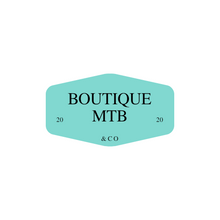Handlebars, Width, Upsweep, Back-sweep, Carbon, Alloy… Let’s Talk About It!
Mountain biking is more than just a sport—it’s a finely tuned relationship between rider and machine. If you’re love hitting the trails, you know that every component on your bike matters. Today, we’re talking about handlebars. From width and sweep to materials and personal setups, the right handlebar can elevate your riding experience.
One technique I’ve personally used—and recommended to coaching clients over the years—is to find your most comfortable push-up position. Get into a push-up stance where you feel strongest and most stable. Measure the distance between the outside edges of your hands. This measurement is an excellent baseline for your handlebar width, maximizing your range of motion, strength, and endurance. If you’re riding a bike dedicated to bike parks, add 10mm (5mm at each end!) for more stability. On the flip side, for tight wooded trails, subtract 10mm—your pinky knuckles will thank you when you avoid snagging trees.
Let’s dive deeper into how width, sweep, material, and experimenting with your setup can make all the difference.
The Importance of Getting It Right
Your handlebars are more than just a steering mechanism—they’re your control center. The wrong setup can lead to discomfort, reduced control, and even injury, while the right setup enhances:
• Control: Wider bars for stability, narrower ones for maneuverability.
• Comfort: Correct alignment reduces strain on your body, letting you ride longer and harder.
• Performance: The right fit translates to more power and efficiency, helping you tackle technical trails and long climbs with ease.
The Handlebar Breakdown: What to Consider
1. Width: The Goldilocks Zone (for most as this is very much based on your shoulders width)
Width is the first thing to consider when choosing handlebars. The wrong width can throw off your balance and comfort.
• Wide Bars (780–820 mm): Ideal for downhill or bike park riding. They provide extra stability and control, especially on fast, rough descents.
• Narrower Bars (700–760 mm): Perfect for tight, technical trails where maneuverability is key.
Finding Your Fit
As mentioned earlier, use the push-up technique for a baseline measurement. From there:
• Add 10mm for open bike park-style riding.
• Subtract 10mm for tight trails with trees.
Pro Tip: If you’re trying narrower bars, slide your controls inward temporarily to simulate the feel before cutting (you will need opend ended grips for this to work best) .
2. Upsweep and Backsweep: Ergonomics in Action
Your handlebars’ angles—upsweep and backsweep—can make or break your comfort:
• Upsweep: Refers to the upward angle of the handlebar ends. Most bars feature a 4–6° upsweep, positioning your wrists naturally and reducing fatigue.
• Backsweep: Indicates how far the bar ends angle back. A common 7–9° backsweep aligns with your shoulders and elbows, minimizing strain during long rides.
Pro Tip for Adjustments
Before committing to a new bar, rotate your existing one slightly forward or backward. These small tweaks can give you a better feel without needing new equipment.
3. Material: Carbon vs. Alloy
The material of your handlebars affects weight, strength, and vibration absorption. Let’s compare:
• Carbon Bars: Lightweight, vibration-damping, and sleek. They reduce fatigue on long rides. A top performer in the carbon category is the OneUp Components Carbon Bar, which offers excellent compliance and control.
• Alloy Bars: Durable and affordable, they’re a great choice for aggressive riders or those on a budget. The Renthal FatBar is a standout, known for its reliability and strength.
Which Should You Choose?
• Go for carbon if weight and vibration damping are priorities.
• Stick with alloy for cost-effectiveness and toughness.
4. Tips for Experimenting with Your Setup
Finding the perfect handlebar setup takes some experimentation. Here’s how to make it easier:
1. Start with Subtle Adjustments: Rotate your bars slightly to tweak upsweep and backsweep angles.
2. Measure Before Cutting: Trim your handlebar width in 5mm increments to avoid irreversible mistakes.
3. Try Before You Buy: If possible, visit a shop that offers demo handlebars. However, finding such a shop in Sweden might be challenging. Many shops have stopped offering boutique services because potential customers often test products locally but buy online in Germany or Spain for slight discounts.
Your Perfect Setup Awaits
Mountain biking is about balance—between adrenaline and control, power and finesse. Dialing in your handlebar setup is the key to unlocking your potential on the trails. Whether you’re switching to carbon for its lightweight performance or adjusting your width for technical terrain, these changes can make a world of difference.
Take the time to experiment and find what works for you. It’s not just about performance; it’s about the joy of riding a bike that feels like an extension of yourself.
Join the Conversation!
Personally, Iv have the same Oneup components carbon 35mm rise on all of my 3 bikes. 760mm on the ebike (those trees come a lot faster at me than they used to and narrower bars have save me from painful and embarasing crashed (I have enough of those as it is), my trail "analogue" bike are cut at 780mm which is the sweet spot for my personal upper body following the push up measurement system, and my DH bike are not cut at all, remaining at the factory 800mm
What’s your handlebar setup? Do you prefer carbon or alloy? Wide or narrow? Share your tips and experiences in the comments or on social media. Let’s keep the stoke alive and the ideas flowing!
(Special thanks to BikeRumor for their detailed reviews on the best handlebars.)


Leave a comment